The origin of the name
Cappuccino is a popular drink worldwide. It originated in Italy, but its history encompasses influences from other cultures and eras.
Some believe that it's a variation from a 17th-century Viennese drink called Kapuziner, which consisted of coffee, cream, sugar, and spices.

The name Cappuccino, however, originated in Italy, possibly inspired by the religious order of the Capuchin friars, due to the similarity between the beverage's color and the monks' robes.
Around the world, Cappuccino has become popular in cafes and restaurants, with variations and adaptations in different cultures.

Let's play Cappuccino - the Board Game!
Cappuccino - Game Info
Cappuccino is a 2-to-4 players game, age 8+, by designer Charles Chevallier.
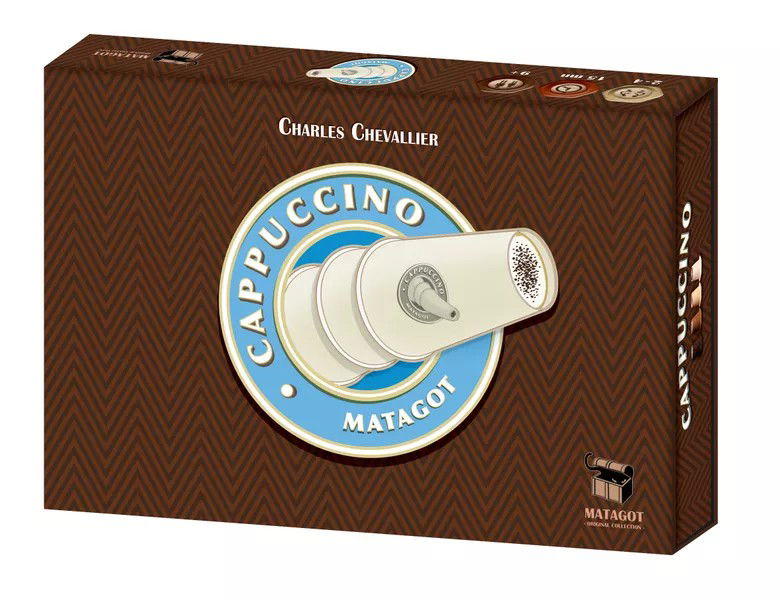
Cappuccino was released in 2013 by Matagot. In Brazil, it was released in 2021 by Vem pra Mesa Jogos. The main mechanics are: grid movement, modular board, set gathering, piece placement, and influence/majority in the area.
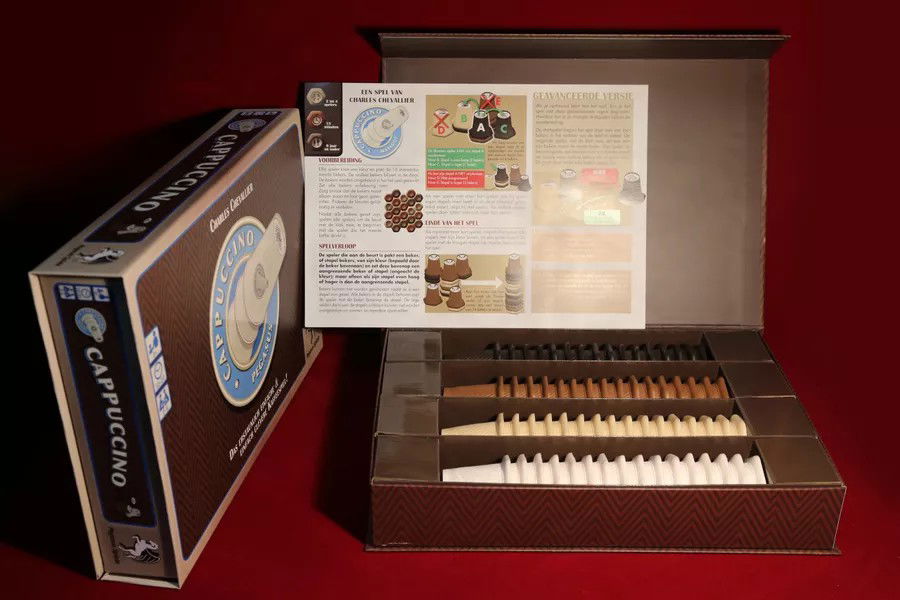
The designer, Charles Chevallier, is the author of other well-known games, such as Abyss, Kanagawa, Continental Express, Looot, The Secret of Monte Cristo, and others.
Let's play!
Playing the game
As coffee lovers, we need to collect as many coffee cups as possible. However, it's not just about going around and grabbing any cups we want; after all, we have to take care of our own coffee cups, which, by the way, are also coveted by other coffee lovers.
Knowing the right timing between collecting opponents' coffee cups and defending our own is the difference between defeat and victory.
Now, can you imagine all this with a few rules and restrictions? Well, that's the scenario in Cappuccino!
Since it's a 4 players' game, there are 4 types of coffee cups. They have different colors, and also different designs on the top of the cup, which bears the famous Latte Art, when the barista creates patterns and figures on the surface of the drink with steamed milk. This adds a very charming touch to the game.
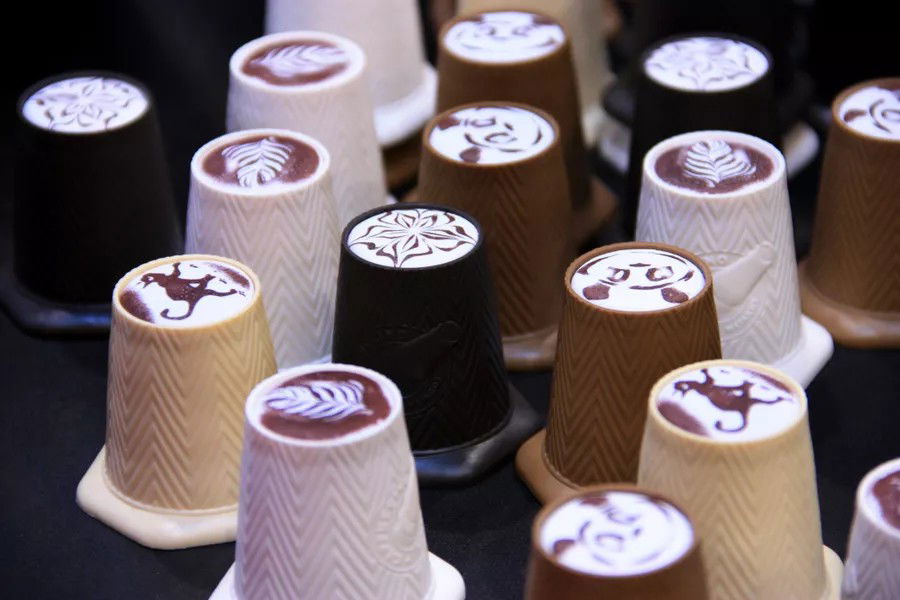
The game's setup is simple, but it can also be very strategic. Each player picks up their 16 colored coffee cups, and place them at the table. All cups must be next to each other, touching on the sides and leaving no gaps. There are 2 ways to place the cups:
- Option 1: Place them randomly, but try to evenly balance the color distribution;
- Option 2: The first player starts the game by placing one of their cups at the center of the table. The next player, going clockwise, places one of their cups next to the first one. Each player in turn order then
places one of their cups next to at least two other cups that have already been placed. This continues until all cups have been placed.
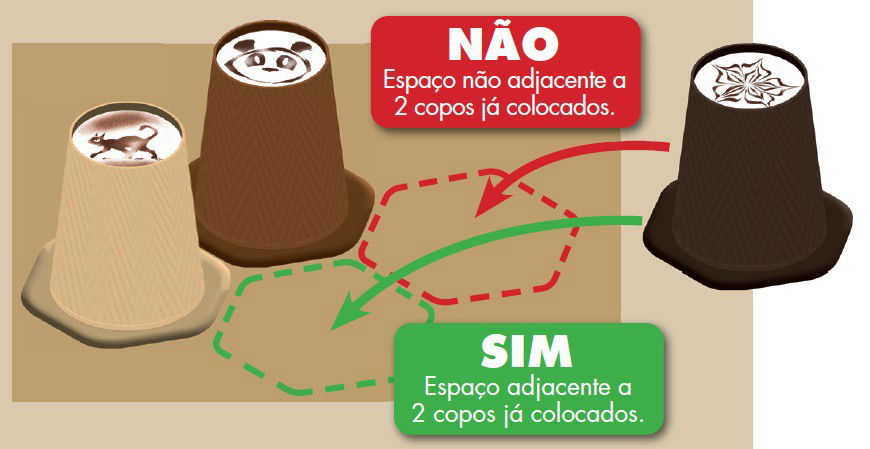
Once all cups are places, the game begins!
Cappuccino has very simple turn actions, yet they're highly strategic. You follow 3 steps:
- Step 1: Choose a cup or a pile of cups to move;
- Step 2: See if there's a cup or pile of cups adjacent to the one you chose that has the same number of cups or less than yours;
- Step 3: if there is, then place your cup or pile of cups on top of the other cup or pile of cups that is equal or smaller than yours. Otherwise, choose a new cup or pile of cups and repeat the steps.
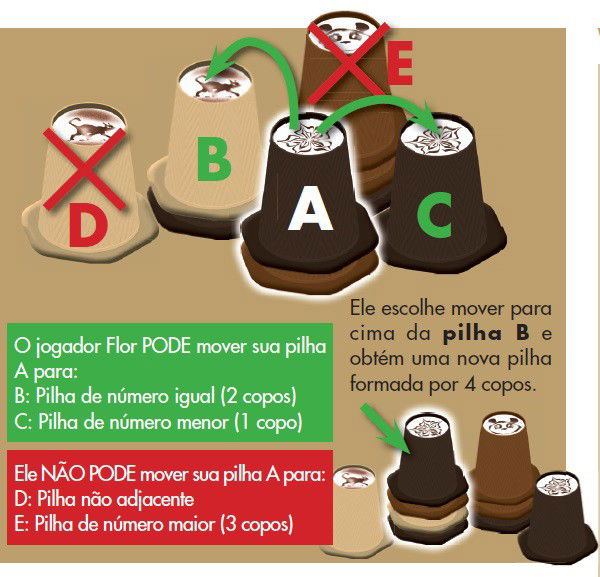
Action 1 is very important, as you now decide which of your cups, or pile of cups (from turn 2 and onward) will be used this turn. This will say a lot about your strategy. After all, your cup of choice may have adjacent cups of your color or opposing colors, which means you can be defensive (if you want to increase the number on your pile) or aggressive (if you focus on capturing your opponents' cups).
In Action 2, you must check whether it is allowed to capture any adjacent cup or pile. You are only allowed to capture an adjacent cup or pile if it has an equal or smaller total number of cups than the pile you chose to move this turn.
Reminder: When possible, you can always freely choose between increasing an existing pile of yours, or capturing an opponent's one. To increase your own pile is a defensive move, while capturing an opponent's pile is surely aggressive.
Here's an important concept: the owner of the pile is determined by the colored cup (or Latte Art) on top of the pile. Whoever owns the top cup, owns the whole pile.
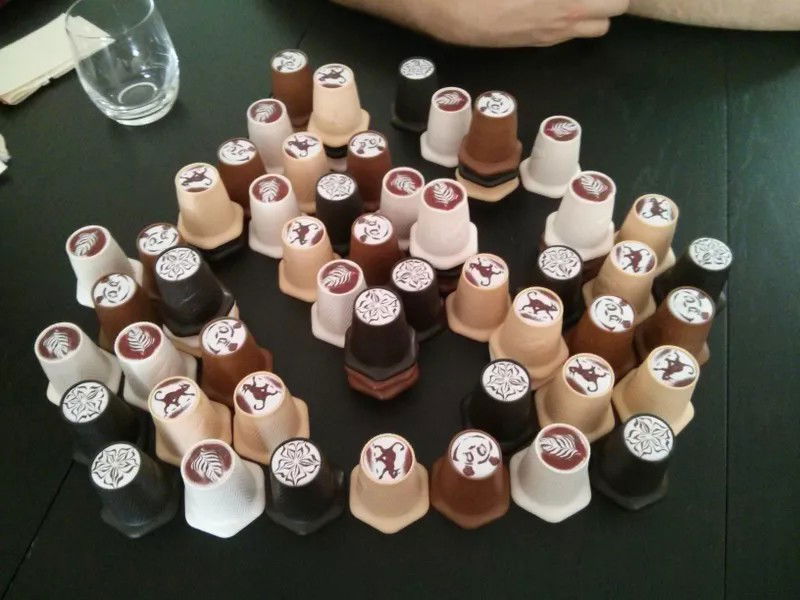
Finally, it's time to reveal your strategy: Action 3. This is when you know it's time to capture an opponent's pile - it's time to decide whether to be conservative, growing your piles, or aggressive, going after opponent's pile. The strategic choice is yours to make.
If, in Action 1, you choose a cup or pile of yours that doesn't meet any capture criteria for Action 2, choose another of your cups or piles and continue.
Another important point is that if a pile, either yours or your opponent's, is isolated, with nothing adjacent to it, that pile is safe. It will end up with whoever of the players has the top-most coffee cup.
Once done, play resumes to the player to your left. That's a round of Cappuccino!
Ending the Game
The game ends when no one can make any moves, that is, when it's not possible to capture anything. Each player then stacks all the piles of their color, forming a single pile.
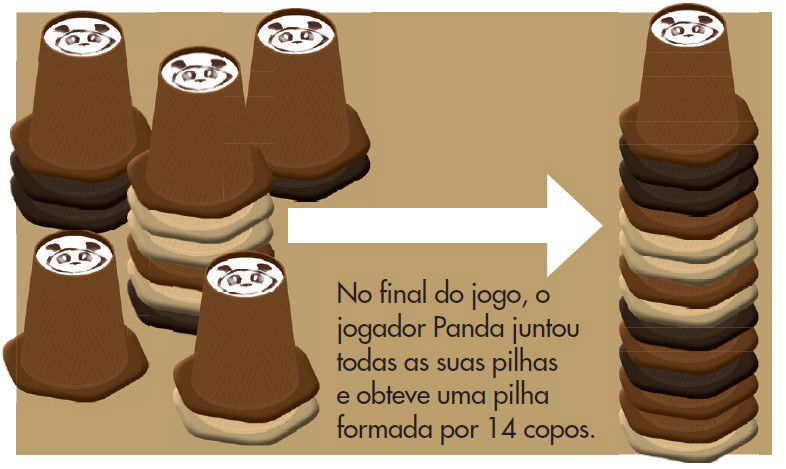
Whoever has the biggest pile (or largest number of cups) is the winner!
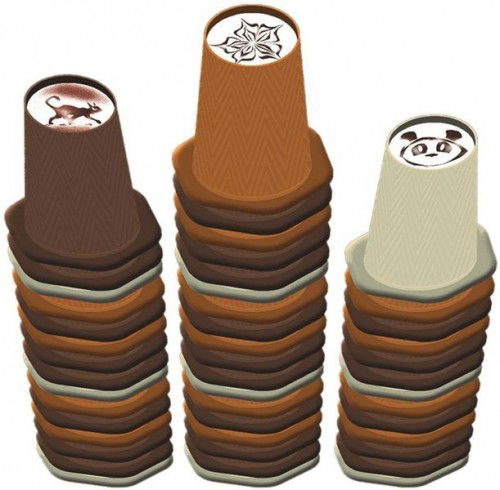
Strategy Tips
Cappuccino is pure strategy, from start to finish. Right from the setup, you must be aware where you place your cups, since the game prioritizes the best positioning and whoever seizes the best opportunities.
There are no shortcuts, but a nice tip is to try and never keep all your coffee cups too close together during the setup. When they're too close, you'll be forced to defend all of them, which is not an entirely good thing. You want to be able to pressure your opponents by collecting coffee cups from them.
You should always try to mix it up: you can leave one or two of your cups nearby during setup to build a pile and start gaining ground. But you should certainly focus on capturing Cups. To achieve this, there's nothing better than spreading out your coffee cups during setup to give you more options to capture.
Cappuccino is the kind of game where you can't take your eyes off the board. You have to keep an eye on the whole game, carefully consider the attack and defense options, see who's winning, and go after their cups, because if you mess up, the number of cups captured by your opponent will quickly increase.
It's a famous game of opportunity. Whoever is most alert and best positioned has a good chance of winning.
Another important tip is to try to isolate your piles, that is, make a move, either capture or defense, that separates your stack from the rest of the cups. This way, your stack will be "safe," meaning there won't be anyone else adjacent to it to attack it. Do this whenever you can. It will be both a guaranteed pile and one less pile to manage.
Based on these tips, develop your best strategy, defend when necessary, attack whenever possible, and win in Cappuccino.
Rules and Gameplay Videos
Rules:
Gameplay:
Pedagogical Tips
If you're looking for a truly simple game, language-independent, with engaging components and a cool theme, Cappuccino is the game for you.
Cappuccino, in addition to all these features, also serves as an excellent entry-level game for beginners and children. It offers many educational stimuli: strategy, management, decision-making, logical-mathematical reasoning, and spatial awareness.
As mentioned, strategy will be required from the beginning of the game, and kids will soon realize that staying "in their own corner," placing their coffee cups close together, won't give them much of an advantage in capturing their opponents' cups. This is instinctive; they'll realize it right away.
This will also be an exercise in spatial awareness, as they'll choose where to place their coffee cups to gain a greater competitive advantage—that is, in a way that allows them to attack more, or rather, capture more of their opponent's cups, which is the most fun part of the game.
Obviously, you've already noticed that decision-making is important throughout the game, from start to finish.
Last but not least, logical-mathematical reasoning will be required throughout the game, as they will have to compare the size of the piles each turn. They can only capture piles that are equal to or smaller than their own. So, these will be small additions, but since they are done constantly throughout the game, it will be an excellent mathematical exercise without the kids even realizing it. They will literally learn while playing.
Pedagogically, Cappuccino encourages strategy, management, decision-making, logical-mathematical reasoning, and on top of that, it's fun!
I recommend Cappuccino for your collection!








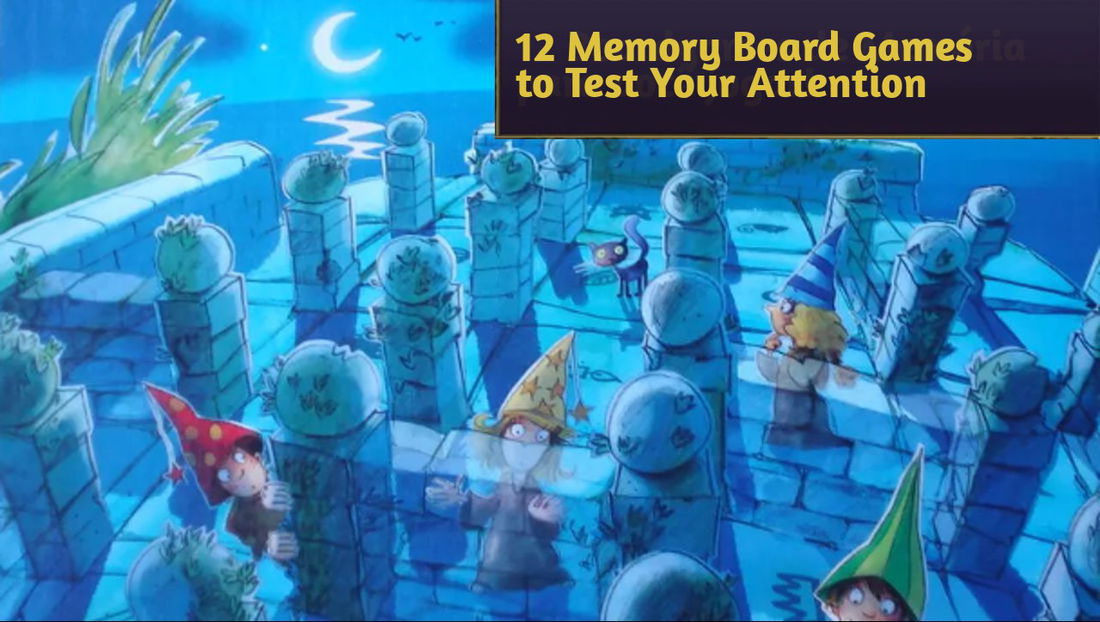



— Kommentare 0
, Reaktionen 1
Sei der erste der kommentiert